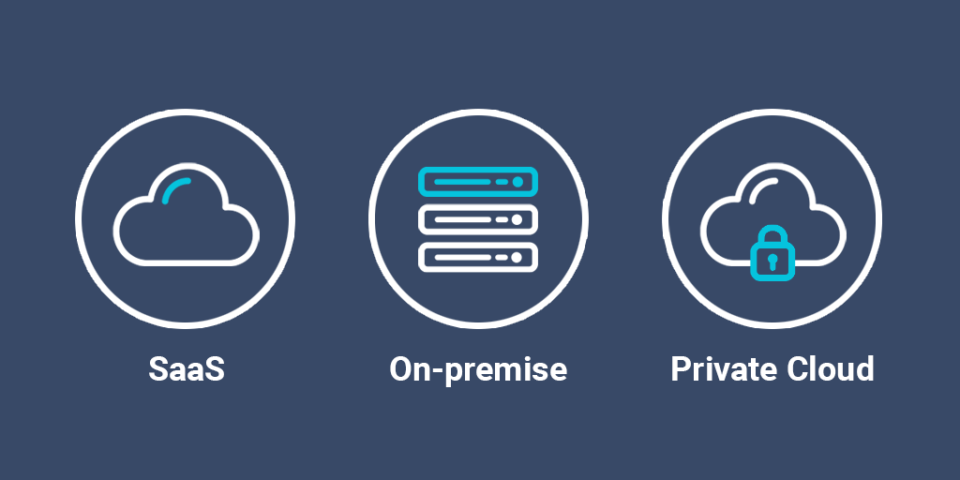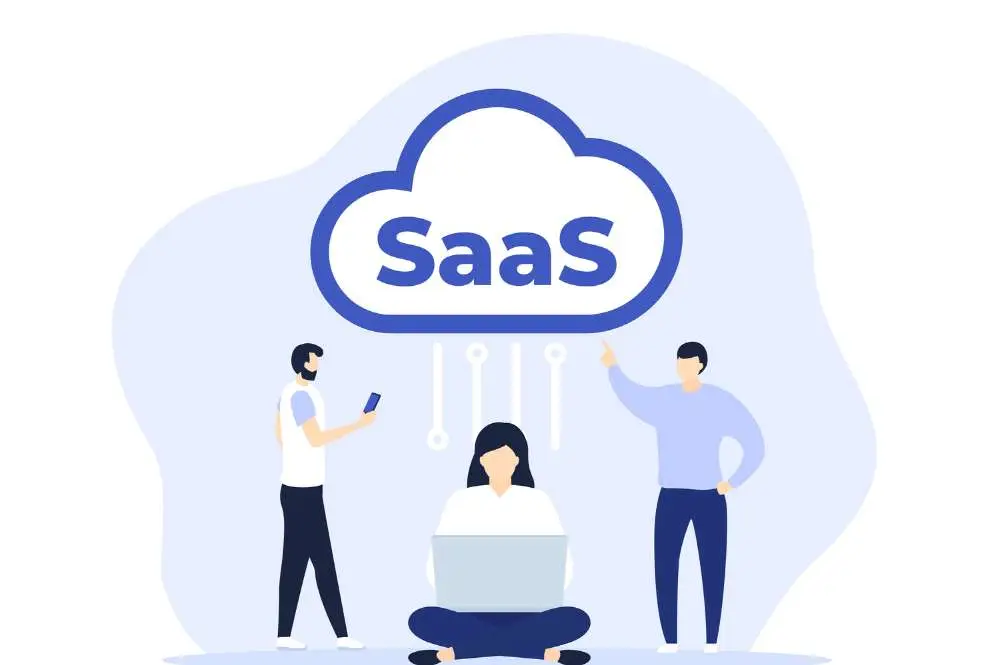What is SaaS? Understanding the Foundation of Modern Business Software
Before we dive into the myriad benefits of SaaS, let’s establish a clear understanding of what it actually is. Software as a Service (SaaS) is a cloud-based delivery model that allows users to access software applications over the internet rather than installing them locally on individual computers.
The Evolution of Software Delivery
To truly appreciate the benefits of SaaS, it’s helpful to look at how software delivery has evolved. In the past, businesses had to purchase software licenses, install programs on each computer, and manage updates manually. This process was time-consuming, expensive, and often resulted in version inconsistencies across an organization.
SaaS has transformed this model. Now, instead of owning and maintaining software, companies can simply access it via the internet. This shift has brought about numerous advantages that we’ll explore in depth throughout this article.
Key Characteristics of SaaS
SaaS solutions typically share several key characteristics:
- Cloud-based: Accessible from anywhere with an internet connection
- Subscription model: Pay-as-you-go pricing structure
- Automatic updates: Managed by the service provider
- Multi-tenancy: Multiple users can access the same version of the software
- Scalability: Easy to adjust usage based on business needs
These features form the foundation of the numerous benefits that SaaS offers to businesses of all sizes and across various industries.
The Core Benefits of SaaS: Transforming Business Operations
Now that we’ve established what SaaS is, let’s delve into the core benefits that make it such a powerful tool for modern businesses. These advantages are driving the rapid adoption of SaaS solutions across industries and are reshaping how organizations approach their software needs.
1. Cost-Savings and Financial Flexibility
One of the most compelling benefits of SaaS is its cost-effectiveness. Traditional software typically involves high upfront costs for purchase and installation, along with ongoing maintenance and upgrade expenses. SaaS, however, operates on a subscription-based model, allowing businesses to pay as they go.
This approach not only lowers initial costs but also helps organizations manage their budgets more effectively. The subscription model ensures predictable monthly or annual expenses, which simplifies financial planning. It also allows businesses to scale services according to their needs, providing unparalleled financial flexibility.
For example, a small startup can begin with a basic package and gradually increase its subscription as the company grows, without the need for significant capital expenditure on software infrastructure.
2. Accessibility and Convenience
With SaaS applications, users can access their software via the internet from any location, using any device with a browser. This flexibility is crucial for businesses with remote workforces or employees who travel often.
The ability to access information and tools from anywhere supports the growing trend toward remote and hybrid work models, ensuring uninterrupted productivity no matter where employees are located. This has become particularly important in the wake of global events that have accelerated the shift towards flexible working arrangements.
Imagine a sales team that can access customer data, update records, and generate reports while on the go, or a project manager who can oversee tasks and communicate with team members from a coffee shop or home office. SaaS makes these scenarios not just possible, but seamless.
3. Easy Implementation and User-Friendly Interface
Deploying traditional software across a company can be time-consuming and complicated. SaaS solutions, in contrast, are typically easier to implement with minimal disruption. Suppliers handle the hosting and backend support, allowing your IT team to focus on other crucial tasks.
Moreover, SaaS applications often feature user-friendly interfaces with ongoing updates to ensure a smooth and current user experience. This reduces the learning curve and allows employees to adopt the system quickly, leading to faster returns on investment.
For a real-world example of how user-friendly SaaS can be, check out this video overview of Salesforce, a popular SaaS CRM solution: Salesforce CRM Demo
4. Automatic Updates and Continuous Innovation
In the SaaS model, the service provider manages updates and upgrades, eliminating the need for companies to manually implement these themselves. This ensures that your business always benefits from the latest features and security updates without any downtime or additional effort from your IT team.
The continuous innovation cycle of SaaS providers means that new features and improvements are regularly rolled out to all users. This keeps your software cutting-edge and adaptable to changing business needs and market conditions.
5. Scalability and Integration Capabilities
Businesses change over time, and software needs to adapt accordingly. SaaS solutions offer scalability, allowing companies to easily adjust their usage plans without the need for additional hardware or software investments.
Many SaaS offerings include APIs and integration capabilities with other software tools, enabling a seamless mix of existing platforms for enhanced functionality across operations. This interoperability can lead to more efficient workflows and better data management across different business functions.
6. Enhanced Security and Data Protection
While some businesses initially had concerns about the security of cloud-based solutions, SaaS providers have made significant strides in this area. In fact, many SaaS solutions now offer better security than on-premises alternatives.
SaaS providers invest heavily in security measures, including:
- Regular security audits and certifications
- Advanced encryption for data in transit and at rest
- Automated backup and disaster recovery processes
- Compliance with industry-specific regulations (e.g., HIPAA for healthcare, GDPR for data protection)
This level of security would be costly and complex for many businesses to implement on their own, making it another significant benefit of adopting SaaS solutions.

Real-World Applications of SaaS: Transforming Industries
The benefits of SaaS are not just theoretical; they’re being realized across numerous industries, transforming how businesses operate and deliver value to their customers. Let’s explore some specific applications and examples of how SaaS is making a difference in various sectors.
SaaS in Financial Services
In the financial sector, SaaS helps manage large-scale data analytics for trend forecasting and risk assessment. For instance, Bloomberg Terminal, a SaaS platform, provides real-time financial data, analytics, and news to financial professionals worldwide.
Another example is Stripe, a popular payment processing SaaS that allows businesses to easily accept online payments without the need for complex financial infrastructure. You can learn more about Stripe’s services here: Stripe Payment Processing
SaaS in Healthcare
SaaS platforms in healthcare facilitate telemedicine, patient data management, and medical research. Epic Systems, for example, provides cloud-based electronic health record (EHR) solutions that allow healthcare providers to access patient information securely from anywhere.
Telemedicine platforms like Teladoc Health have also leveraged SaaS to connect patients with doctors remotely, a service that has become increasingly vital in recent years.
SaaS in Education
The education sector has seen a significant transformation with the adoption of SaaS solutions. Learning Management Systems (LMS) like Canvas and Blackboard allow educational institutions to manage course content, track student progress, and facilitate online learning.
These platforms have been instrumental in enabling remote and hybrid learning models, particularly in response to global events that have disrupted traditional in-person education.
SaaS in E-commerce
E-commerce businesses rely heavily on SaaS solutions for everything from website hosting to inventory management. Platforms like Shopify provide a comprehensive suite of tools for setting up and managing online stores, making it easier than ever for entrepreneurs to start and scale their businesses.
For a quick overview of how Shopify works, check out this video: Shopify Tutorial for Beginners
Challenges and Considerations When Adopting SaaS
While the benefits of SaaS are numerous, it’s important to acknowledge that there can be challenges and considerations when adopting these solutions. Being aware of these potential hurdles can help businesses make informed decisions and implement SaaS strategies more effectively.
Data Privacy and Compliance
While SaaS providers generally offer robust security measures, businesses need to ensure that their chosen solutions comply with relevant data protection regulations. This is particularly crucial for companies handling sensitive information or operating in heavily regulated industries.
It’s essential to thoroughly review the provider’s data handling practices and ensure they align with your compliance requirements.
Integration with Legacy Systems
While many SaaS solutions offer integration capabilities, connecting them with existing legacy systems can sometimes be challenging. This is especially true for larger organizations with complex IT infrastructures.
Careful planning and potentially the use of middleware solutions may be necessary to ensure smooth integration and data flow between different systems.
Internet Dependency
SaaS solutions rely on internet connectivity. While this enables remote access, it also means that internet outages can potentially disrupt business operations. It’s important to have contingency plans in place for such situations.
Customization Limitations
Some SaaS solutions may offer less customization than on-premises software. While this can be an advantage in terms of simplicity and ease of use, it may not suit businesses with highly specific or unique requirements.
It’s important to thoroughly evaluate whether a SaaS solution can meet your specific needs before committing to it.

The Future of SaaS: Trends and Predictions for 2025 and Beyond
As we look ahead to 2025 and beyond, it’s clear that SaaS will continue to evolve and shape the business landscape. Here are some key trends and predictions for the future of SaaS:
Artificial Intelligence and Machine Learning Integration
AI and ML are increasingly being integrated into SaaS solutions, enabling more intelligent, automated, and predictive capabilities. This could lead to more personalized user experiences, better decision-making tools, and more efficient business processes.
Vertical SaaS Solutions
While many SaaS solutions are designed for broad use across industries, we’re likely to see more vertical SaaS solutions tailored to specific industries. These specialized solutions will offer deeper functionality and industry-specific features.
Increased Focus on User Experience
As competition in the SaaS market intensifies, providers will place even greater emphasis on user experience. This could lead to more intuitive interfaces, better onboarding processes, and more personalized experiences for users.
Edge Computing and SaaS
The rise of edge computing could impact how SaaS solutions are delivered, potentially reducing latency and improving performance for certain types of applications.
Blockchain and SaaS
Blockchain technology could be integrated into SaaS solutions to enhance security, improve transparency, and enable new functionalities, particularly in areas like supply chain management and financial services.
Conclusion: Embracing SaaS for Business Success
As we’ve explored throughout this article, the benefits of SaaS are numerous and far-reaching. From cost savings and improved accessibility to enhanced security and continuous innovation, SaaS is revolutionizing how businesses operate and compete in the digital age.
While there are challenges to consider, the advantages of SaaS far outweigh the potential drawbacks for most organizations. As technology continues to evolve, SaaS will undoubtedly remain at the forefront, driving business growth and innovation.
Whether you’re a small startup or a large enterprise, embracing SaaS solutions is a pathway to more agile, efficient, and competitive operations. As we look towards 2025 and beyond, the businesses that leverage SaaS effectively will be well-positioned to thrive in an increasingly digital and interconnected world.
Remember, the key to success with SaaS is choosing the right solutions for your specific needs and implementing them thoughtfully. Take the time to assess your requirements, evaluate different options, and plan for a smooth transition. With the right approach, SaaS can be a powerful driver of business success and innovation.
Are you ready to explore how SaaS can benefit your business? Start by identifying areas where cloud-based solutions could streamline your operations, reduce costs, or enable new capabilities. The future of business is in the cloud – and with SaaS, that future is more accessible than ever before.
